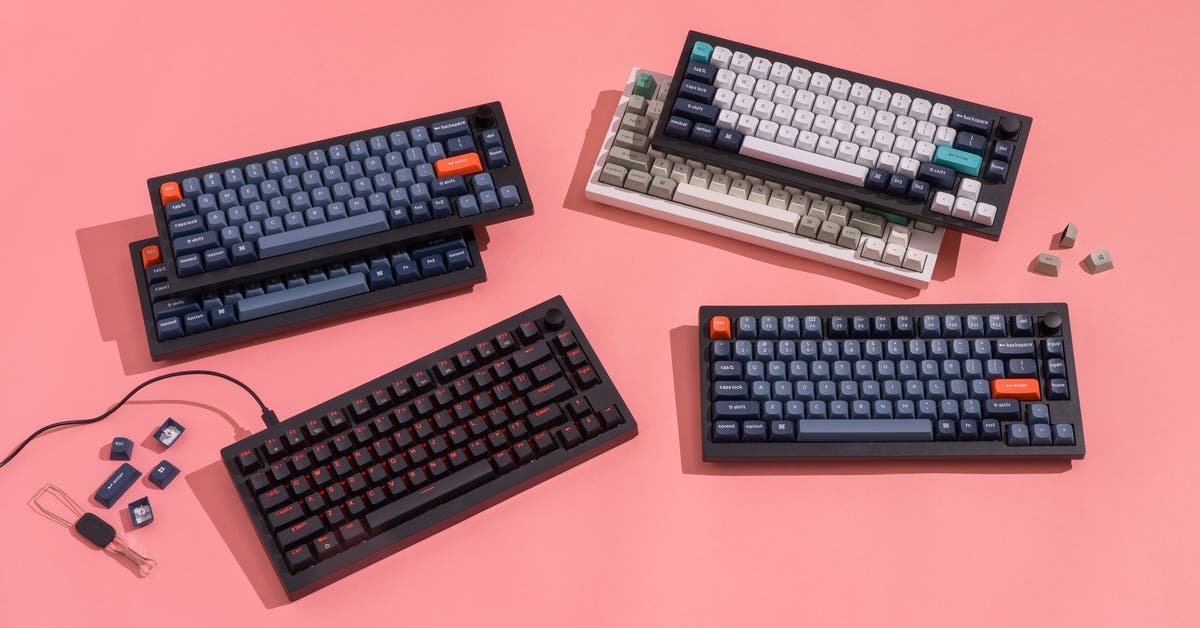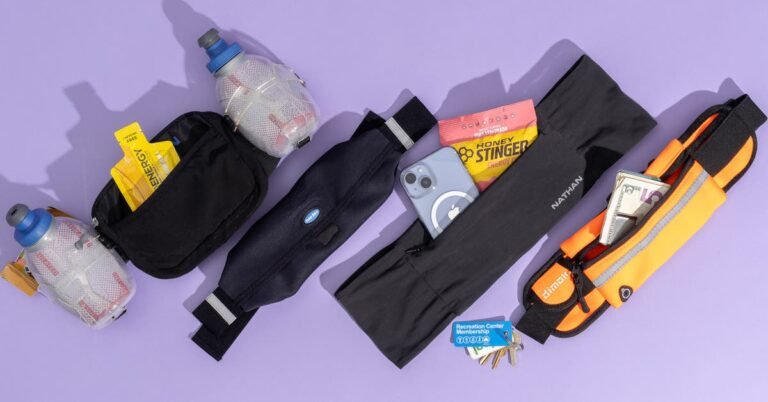75%
Our former top pick, the Epomaker TH80 Pro, has been discontinued. It’s still a great keyboard, with a white case, thick keycaps, and the same features as the Keychron V1 Max. But you have to download Epomaker’s less-intuitive software to customize it.
The Epomaker TH80-X has a fun little LCD screen that you can customize in Epomaker’s software to display cool animations. Typing on it feels similar to using the TH80 Pro, but it has limited switch variety and lacks Mac keycaps.
The Keychron V1 is the previous version of our top pick. It has many of the same features, but it lacks wireless connectivity, and the rotary knob costs extra.
The Keychron Q1 Pro was our former upgrade pick, but the Q Max models offer an improved typing sound and feel, and they support a 2.4 GHz wireless connection.
Although the Epomaker Galaxy70 feels excellent to type on, it’s wide for a compact keyboard, it’s available only with linear switches, and its knob cannot be customized.
The Mchose Z75, Mchose Z75S, and Mchose G75 have many of the features of our top picks, but their software is confusing and difficult to navigate, and they don’t come with Mac keycaps. The Z75 has an optional knob, but it doesn’t sit flush with the case and feels mushy.
The Mchose X75 V2 has the same confusing software as the company’s other keyboards and is too wide.
The Asus ROG Azoth didn’t feel as nice to type on as our picks, and the Armoury Crate software was excruciatingly slow and unreliable at the time of our testing.
The Epomaker TH80 Pro V2 lacks a knob, lacks Mac keycaps, and has a smaller battery than our picks.
While the Epomaker EP84 Plus is a decent budget option, it’s available only with linear switches and pink and purple keycaps.
We were unable to access the Epomaker P75’s web-based configurator at all during testing.
The Keychron K2 Pro lacks a knob, its case is comparatively tall, and its included cable is too short to reach across most desks.
The KiiBoom Phantom 81 V2 is pretty, but it’s difficult to keep clean—despite coming with the largest microfiber cloth I’ve ever seen—and expensive.
The Epomaker Tide75 is expensive compared with our picks and is available only with linear switches. Its fun color options are limited to side-printed keycaps.
The Epomaker HE75 Tri is available only with front-printed keycaps, and its case has a conspicuous logo on the front.
Despite offering a cute design, a decent price, replaceable batteries, and a reliable wireless connection, the Logitech Pop Keys disappoints, as it has circular keys, which aren’t a great fit for a mechanical keyboard. After weeks of using it, I still struggle to type accurately on it.
The Epomaker DynaTab 75X has a fun dot-matrix screen, but it’s difficult to customize, its stabilizers sound inconsistent, and it lacks Mac keycaps.
The Corsair K65 Plus Wireless, HyperX Alloy Rise 75 Wireless, and Razer Blackwidow V4 Pro 75% are expensive for keyboards with plastic cases.
We tested several Hall Effect keyboards, including the truly excellent Lemokey P1 HE, the Keychron Q1 HE, the Keychron K2 HE, and the Epomaker HE75 Mag. But the extra customization is primarily useful for gaming, and these keyboards work only with linear switches, which aren’t ideal for typing.
The following models lack a combination of hot-swap support, wireless connectivity, PBT keycaps, and other features that our top picks have: Corsair K65 Plus Wireless Apple Special Edition, Drop Sense75, HyperX Alloy Rise 75, Keychron K2 V2, Lenovo Legion K510 Pro Mini Keyboard, Razer BlackWidow V4 75%, and Vortex Race 3.
65% and 68%
The Keychron V2, the previous version of the Keychron V2 Max, lacks wireless connectivity, and its rotary knob costs extra.
The Keychron Q2 Pro was one of our former upgrade picks. The newer Q Max version feels better to type on and has a 2.4 GHz connection.
The Keychron K6 was our former budget pick, but it often costs nearly as much as our top picks.
The Lemokey X6 looks, sounds, and feels cheap next to our budget pick, and it lacks a knob.
The Alienware Pro Wireless Keyboard automatically installs software when plugged in, without any prompt or opportunity for you to consent.
Although the Cooler Master CK720 felt lovely to type on, it slid around easily, and its hard-plastic feet scratched my desk. Its rotary knob was difficult for me to use without hitting the Del key.
We love the Drop Alt V2’s flatter profile and RGB light bar, but it’s expensive for a keyboard that lacks wireless support. It’s also more confusing to program than our picks, and its Holy Panda X Clear tactile switches didn’t feel as nice to type on.
The Epomaker Tide65 is expensive and comes only with linear switches, and its more colorful options are limited to side-printed keycaps.
The Keychron K6 Pro has no knob, a tall case, and a short included cable.
Compared with our budget pick, the Qisan Magicforce’s case feels hollow and cheap, its keycap legends are ugly, and it lacks warranty coverage.
The Vortex Cypher feels hollow and cheap to type on. It has an ugly keycap font, too, and it doesn’t come with a manual.
The following models lack a combination of hot-swap, wireless connectivity, PBT keycaps, or full programmability, among other features: Asus ROG Falchion, Asus ROG Falchion Ace, Asus ROG Falchion NX, Cherry Xtrfy K5V2, Cooler Master CK721, Drop Alt, Ducky One 2 SF, Ducky One 3 SF, Ducky x Varmilo Miya Pro, Endgame Gear KB65HE, Higround Base65, HyperX Alloy Origins 65, Keychron Q2, Leopold FC660MBT, LTC Nimbleback, Meko Push, and Razer BlackWidow V3 Mini HyperSpeed.
60%
Our former 60% pick, the Keychron V4, is largely identical to the V4 Max but lacks wireless.
The Logitech G Pro X 60 has a fun volume wheel on its side. But it doesn’t feel as nice to type on as the V4 Max, it lacks hot swap, and the Fn key cannot be mapped to other keys in the software.
The Keychron Q4 Pro was one of our former upgrade picks; we’re waiting for Keychron to launch the improved Max version in this layout.
The Anne Pro 2 is fully programmable but lacks hot-swap and can’t match the typing experience of the Keychron V4 Max.
The Fujitsu HHKB Pro 3 Hybrid is a great Topre keyboard that’s fully programmable and equipped with Bluetooth support. But it’s expensive, and the classic HHKB layout lacks keys in the bottom left and bottom right of the keyboard.
The HyperX 60 Alloy Origins has a rattly space bar and lacks hot-swap. It’s fully programmable, but the Windows-only Ngenuity software is not as intuitive as VIA or Keychron Launcher.
The Keychron K12 Pro is comparatively tall and has a short included cable.
The Kinesis Gaming TKO is ridiculously complicated to reprogram.
The following models lack full programmability: Corsair K70 Pro Mini Wireless, Ducky One 2 Mini, Ducky One 3 Mini, Epomaker EP64, Fujitsu HHKB Pro 3 Classic, Keychron K12, Razer Huntsman Mini, Vortex Pok3r, and Vortex Tab 60.
This article was edited by Signe Brewster and Caitlin McGarry.
Source link
[og_img
75%
Our former top pick, the Epomaker TH80 Pro, has been discontinued. It’s still a great keyboard, with a white case, thick keycaps, and the same features as the Keychron V1 Max. But you have to download Epomaker’s less-intuitive software to customize it.
The Epomaker TH80-X has a fun little LCD screen that you can customize in Epomaker’s software to display cool animations. Typing on it feels similar to using the TH80 Pro, but it has limited switch variety and lacks Mac keycaps.
The Keychron V1 is the previous version of our top pick. It has many of the same features, but it lacks wireless connectivity, and the rotary knob costs extra.
The Keychron Q1 Pro was our former upgrade pick, but the Q Max models offer an improved typing sound and feel, and they support a 2.4 GHz wireless connection.
Although the Epomaker Galaxy70 feels excellent to type on, it’s wide for a compact keyboard, it’s available only with linear switches, and its knob cannot be customized.
The Mchose Z75, Mchose Z75S, and Mchose G75 have many of the features of our top picks, but their software is confusing and difficult to navigate, and they don’t come with Mac keycaps. The Z75 has an optional knob, but it doesn’t sit flush with the case and feels mushy.
The Mchose X75 V2 has the same confusing software as the company’s other keyboards and is too wide.
The Asus ROG Azoth didn’t feel as nice to type on as our picks, and the Armoury Crate software was excruciatingly slow and unreliable at the time of our testing.
The Epomaker TH80 Pro V2 lacks a knob, lacks Mac keycaps, and has a smaller battery than our picks.
While the Epomaker EP84 Plus is a decent budget option, it’s available only with linear switches and pink and purple keycaps.
We were unable to access the Epomaker P75’s web-based configurator at all during testing.
The Keychron K2 Pro lacks a knob, its case is comparatively tall, and its included cable is too short to reach across most desks.
The KiiBoom Phantom 81 V2 is pretty, but it’s difficult to keep clean—despite coming with the largest microfiber cloth I’ve ever seen—and expensive.
The Epomaker Tide75 is expensive compared with our picks and is available only with linear switches. Its fun color options are limited to side-printed keycaps.
The Epomaker HE75 Tri is available only with front-printed keycaps, and its case has a conspicuous logo on the front.
Despite offering a cute design, a decent price, replaceable batteries, and a reliable wireless connection, the Logitech Pop Keys disappoints, as it has circular keys, which aren’t a great fit for a mechanical keyboard. After weeks of using it, I still struggle to type accurately on it.
The Epomaker DynaTab 75X has a fun dot-matrix screen, but it’s difficult to customize, its stabilizers sound inconsistent, and it lacks Mac keycaps.
The Corsair K65 Plus Wireless, HyperX Alloy Rise 75 Wireless, and Razer Blackwidow V4 Pro 75% are expensive for keyboards with plastic cases.
We tested several Hall Effect keyboards, including the truly excellent Lemokey P1 HE, the Keychron Q1 HE, the Keychron K2 HE, and the Epomaker HE75 Mag. But the extra customization is primarily useful for gaming, and these keyboards work only with linear switches, which aren’t ideal for typing.
The following models lack a combination of hot-swap support, wireless connectivity, PBT keycaps, and other features that our top picks have: Corsair K65 Plus Wireless Apple Special Edition, Drop Sense75, HyperX Alloy Rise 75, Keychron K2 V2, Lenovo Legion K510 Pro Mini Keyboard, Razer BlackWidow V4 75%, and Vortex Race 3.
65% and 68%
The Keychron V2, the previous version of the Keychron V2 Max, lacks wireless connectivity, and its rotary knob costs extra.
The Keychron Q2 Pro was one of our former upgrade picks. The newer Q Max version feels better to type on and has a 2.4 GHz connection.
The Keychron K6 was our former budget pick, but it often costs nearly as much as our top picks.
The Lemokey X6 looks, sounds, and feels cheap next to our budget pick, and it lacks a knob.
The Alienware Pro Wireless Keyboard automatically installs software when plugged in, without any prompt or opportunity for you to consent.
Although the Cooler Master CK720 felt lovely to type on, it slid around easily, and its hard-plastic feet scratched my desk. Its rotary knob was difficult for me to use without hitting the Del key.
We love the Drop Alt V2’s flatter profile and RGB light bar, but it’s expensive for a keyboard that lacks wireless support. It’s also more confusing to program than our picks, and its Holy Panda X Clear tactile switches didn’t feel as nice to type on.
The Epomaker Tide65 is expensive and comes only with linear switches, and its more colorful options are limited to side-printed keycaps.
The Keychron K6 Pro has no knob, a tall case, and a short included cable.
Compared with our budget pick, the Qisan Magicforce’s case feels hollow and cheap, its keycap legends are ugly, and it lacks warranty coverage.
The Vortex Cypher feels hollow and cheap to type on. It has an ugly keycap font, too, and it doesn’t come with a manual.
The following models lack a combination of hot-swap, wireless connectivity, PBT keycaps, or full programmability, among other features: Asus ROG Falchion, Asus ROG Falchion Ace, Asus ROG Falchion NX, Cherry Xtrfy K5V2, Cooler Master CK721, Drop Alt, Ducky One 2 SF, Ducky One 3 SF, Ducky x Varmilo Miya Pro, Endgame Gear KB65HE, Higround Base65, HyperX Alloy Origins 65, Keychron Q2, Leopold FC660MBT, LTC Nimbleback, Meko Push, and Razer BlackWidow V3 Mini HyperSpeed.
60%
Our former 60% pick, the Keychron V4, is largely identical to the V4 Max but lacks wireless.
The Logitech G Pro X 60 has a fun volume wheel on its side. But it doesn’t feel as nice to type on as the V4 Max, it lacks hot swap, and the Fn key cannot be mapped to other keys in the software.
The Keychron Q4 Pro was one of our former upgrade picks; we’re waiting for Keychron to launch the improved Max version in this layout.
The Anne Pro 2 is fully programmable but lacks hot-swap and can’t match the typing experience of the Keychron V4 Max.
The Fujitsu HHKB Pro 3 Hybrid is a great Topre keyboard that’s fully programmable and equipped with Bluetooth support. But it’s expensive, and the classic HHKB layout lacks keys in the bottom left and bottom right of the keyboard.
The HyperX 60 Alloy Origins has a rattly space bar and lacks hot-swap. It’s fully programmable, but the Windows-only Ngenuity software is not as intuitive as VIA or Keychron Launcher.
The Keychron K12 Pro is comparatively tall and has a short included cable.
The Kinesis Gaming TKO is ridiculously complicated to reprogram.
The following models lack full programmability: Corsair K70 Pro Mini Wireless, Ducky One 2 Mini, Ducky One 3 Mini, Epomaker EP64, Fujitsu HHKB Pro 3 Classic, Keychron K12, Razer Huntsman Mini, Vortex Pok3r, and Vortex Tab 60.
This article was edited by Signe Brewster and Caitlin McGarry.
The 6 Best Compact Mechanical Keyboards of 2025
[title_words_as_hashtags



